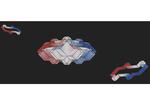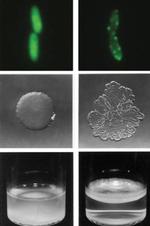Other

“MPQ scientists realize mathematical operations with a quantum gate between two trapped atoms that is mediated by photons. Some powerful rulers of the world may dream of the possibility to get in touch with their colleagues on different continents unnoticed …

“New Terahertz techniques help to detect striped superconductivity above the superconducting transition temperature in cuprates. Understanding high temperature superconductivity (high Tc) has been a long-standing challenge since its discovery in copper oxide compounds in 1986. A key issue in addressing …
News A simplified formulation of lattice gauge theories for applications in particle physics as well as quantum simulations

“Theorists from the field of quantum optics and particle physics find a new and very general approach for the solution of lattice gauge theories. It is not the daily occurrence that physicists from entirely different fields closely work together. However …

“Researchers from LMU/MPQ implement a dynamical version of the 4D quantum Hall effect with ultracold atoms in an optical superlattice potential In literature, the potential existence of extra dimensions was discussed in Edwin Abbott’s satirical novel “Flatland: A …

“The ability to trap and control electrons and other quasi-particles for the study of isolated single particles as well as many-body systems in a solid-state environment can be of major importance for understanding the behaviour of correlated electrons in technologically …

“A team of scientist at MPQ and Caltech proposes the realization of two-dimensional topological insulators by classical optical networks. In the past decade, a new type of material has attracted raising attraction: the so-called topological insulator. This class of materials …

“A team of physicists from Rostock University, the Max Born Institute in Berlin, the Ludwig-Maxmilians-Universität Munich, and the Max Planck Institute of Quantum Optics in Garching has now shown how electrons can be accelerated in an extreme and well-controlled way …

“Experiments with bacteria show that genes can fuse together, leading to the production of novel proteins All organisms must continuously adapt to their environment in order to survive. Such adaptation is brought about by changes in their genetic material. Together …

“Today’s world, rapidly changing because of “big data”, is encapsulated in trillions of tiny magnetic objects – magnetic bits – each of which stores one bit of data in magnetic disk drives. A group of scientists from the Max Planck Institutes …

“A study led by scientists of the Max Planck Institute for the Structure and Dynamics of Matter (MPSD) at the Center for Free-Electron Laser Science in Hamburg presents evidence of the coexistence of superconductivity and “charge-density-waves” in compounds of the …
